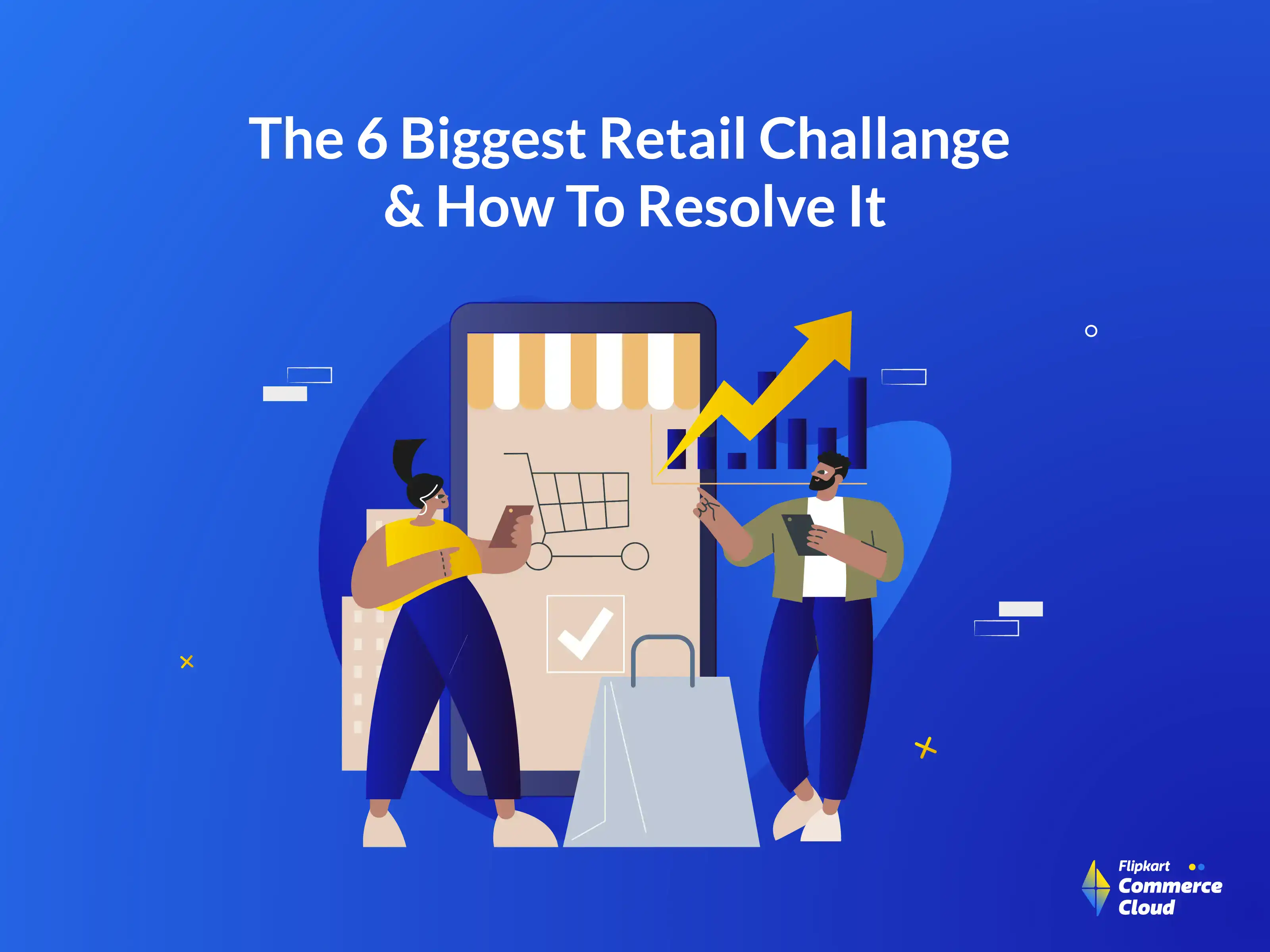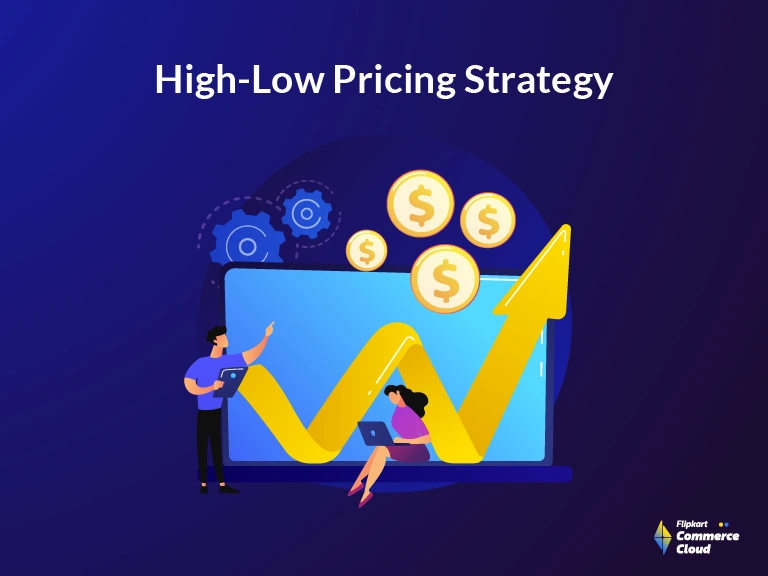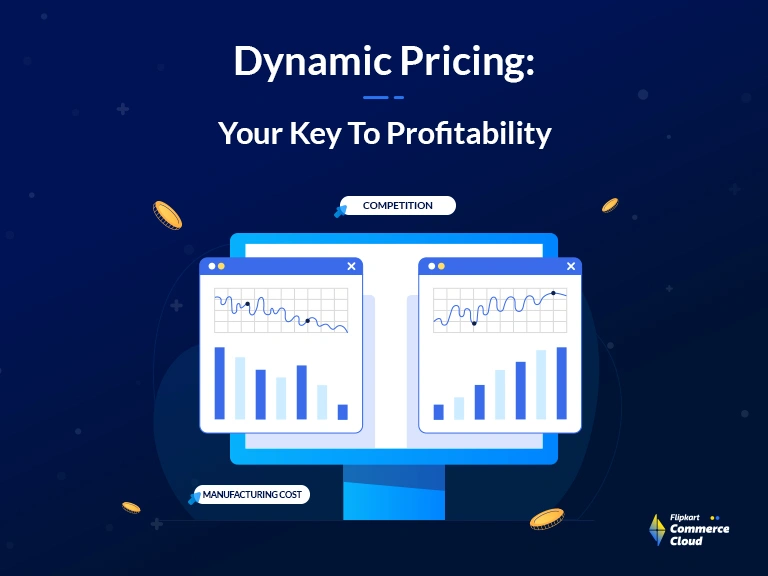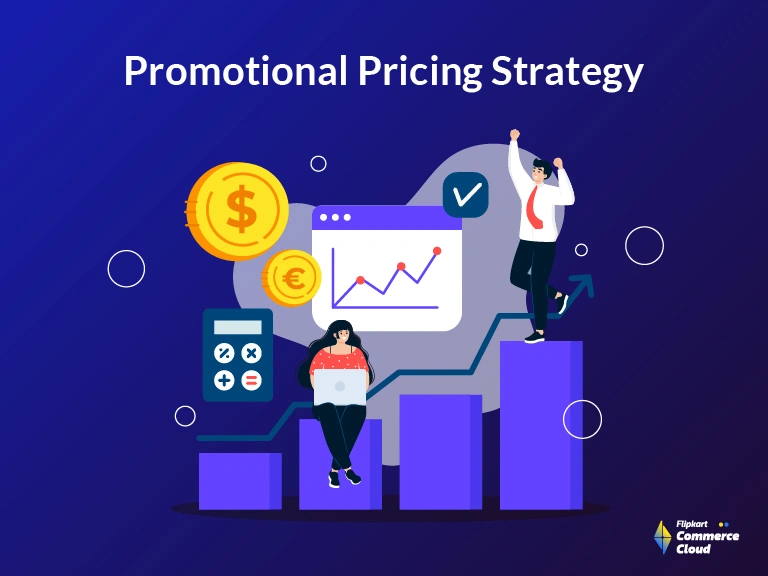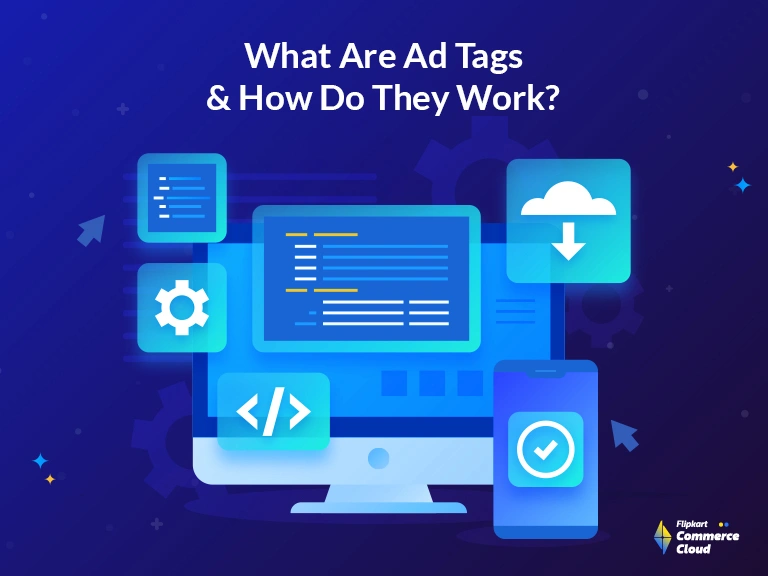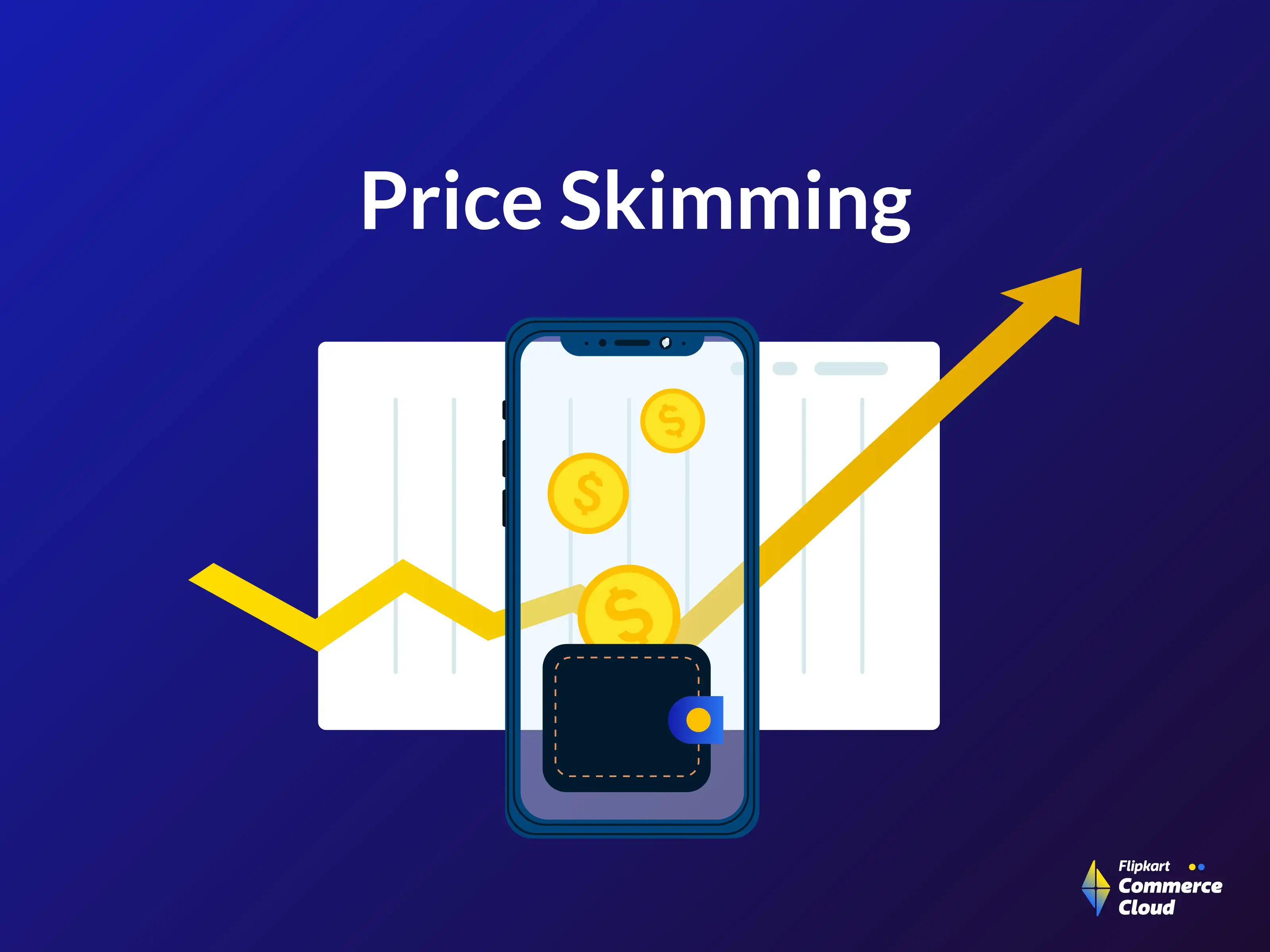Customer preferences are changing quickly, and as a retailer, you are constantly trying to secure their top-of-mind space. But you are likely to face several roadblocks in the path to success. Apart from the market challenges like inflation and rising interest rates you have to manage supply chain disruptions and ensure that customers are happy with your products.
You are always under pressure to improve your customer service and offer better products at reasonable prices. The competition is tough, and overcoming different retail challenges is a necessity. Understanding these problems and finding innovative solutions holds the key to your survival, growth, and success.
In this blog, we will learn about major retail challenges and explore strategies that can help you navigate these hurdles efficiently. Let’s get started.
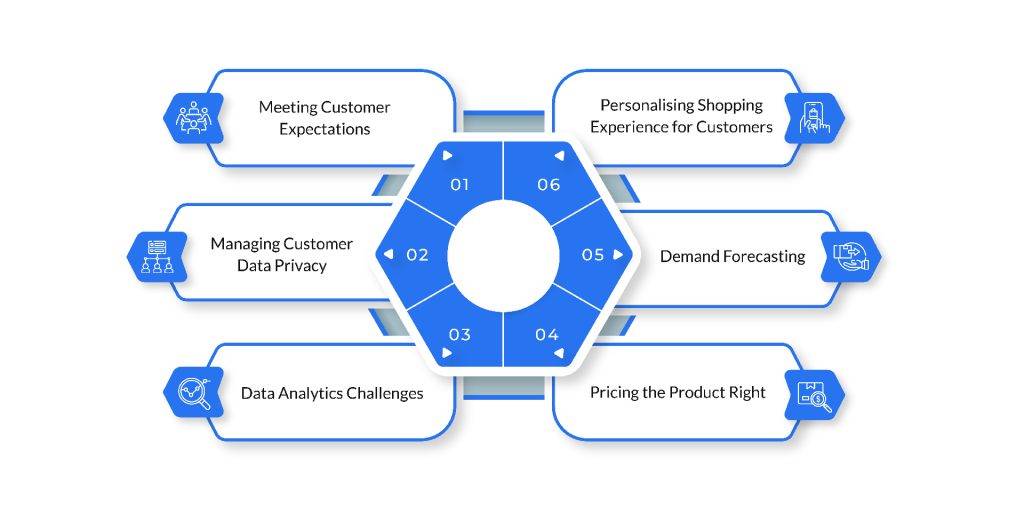
What Are the Key Challenges in Retail?
Retail challenges can range from meeting customer expectations to managing data privacy. But you must remember that every challenge also presents an opportunity for growth and innovation. Let’s understand these retail challenges and explore their potential solutions.
Meeting Customer Expectations
In the modern retail landscape, it is crucial to understand what your customers want. However, without proper data collection and in-depth analytics, you might miss out on valuable insights related to user preferences. As per research, retailers that analyze customer behavior to generate insights outperform their competitors by 85% in sales growth.
Ideally, your retail store should immediately display what customers have been searching for, considering that the results after the first page are seldom visited. The reason is that customers usually find what they are looking for on the first page and rarely feel the need to go beyond it. This is where understanding your consumers’ search intent becomes vital. By knowing what the customers are looking for, you can tailor your retail offerings to their needs, increasing both engagement and sales.
Solution
To overcome this challenge, you need to work on understanding your consumers’ search intent. This can be achieved by working with tech partners that can provide features like smart keyword-based searches, product bundling, and personalized product recommendations.
These features can help tailor your retail store to customer needs, ensuring that they find exactly what they are looking for. When a customer makes their initial purchase from you, the likelihood of them returning is just the beginning.
By providing an exceptional experience, you pave the way for repeat business. With each subsequent purchase, the chances of retaining that customer increase significantly. Remember, a satisfied customer not only returns but also becomes an advocate, driving more sales and contributing to your long-term success.
Managing Customer Data Privacy
Managing customer data privacy is both a legal obligation and a fundamental aspect of business ethics. With your online presence, you are collecting and processing vast amounts of customer data daily. However, huge volumes of unorganized data can become another retail challenge that you have to manage. While data can provide valuable insights into customer behavior and preferences, it also poses significant privacy risks if not managed carefully.
Recent privacy trends show a global shift toward stricter data protection laws. For instance, the European Union’s General Data Protection Regulation (GDPR) and the California Consumer Privacy Act (CCPA) in the US have set new standards for data privacy. These regulations aim to give users more control over their personal data and place responsibilities on businesses to protect this data.
Customer data security must be a priority for your business. Data breaches can result in significant financial losses and cause significant harm to your reputation. In fact, the retail industry continues to be a prime target for cyberattacks. The cost of cyberattacks on the global economy was around $8 trillion in 2023, and this is not going to stop. In fact, research suggests the cost of cyber attacks will reach $10.5 trillion by 2025. As a business, you must take proactive measures to protect your consumer data.
Solution
Make sure the tech solutions you are using are compliant with privacy regulations like GDPR and CCPA. This will not only help safeguard customer data but also build trust with your customer base, enhancing their overall shopping experience.
At Flipkart Commerce Cloud, we take data privacy very seriously, and make sure our cloud commerce solutions are always compliant with privacy regulations of the region.
Data Analytics Challenges
Data is emerging as the new gold standard in the retail sector, and to unlock its full potential, you need to invest in data analytics. It is estimated that by the end of 2024, the global retail sector will spend nearly $9.65 billion on AI, with a major portion of this amount going toward data analytics. By harnessing the power of data analytics, you can gain a deeper understanding of your operations, customer behavior, and market trends. This knowledge is crucial in overcoming the retail challenges presented by modern commerce.
With the retail ecosystem now spread across multiple platforms, including online, in-store, and social media, one significant challenge you might encounter is the aggregation of data from these diverse sources. Handling vast amounts of data from such varied channels and compiling it into a format that is easy to analyze can be a tough task.
On top of that, many retailers still rely on manual analysis using spreadsheets. This approach is not only time-consuming but also prone to errors. It fails to provide the real-time insights that you need to make quick, informed decisions.
Solution
Advances in retail analytics are making it easier for small business owners to overcome these retail challenges. The latest tools are offering advanced data processing capabilities, including descriptive, diagnostic, predictive, and prescriptive analytics.
- Descriptive analytics helps you understand what has happened in the past through a detailed analysis of historical data.
- Diagnostic analytics goes a step further by providing insights into why certain events happened, helping you identify patterns and correlations.
- Predictive analytics uses historical data to forecast future trends, enabling you to anticipate customer behavior and market changes.
- Prescriptive analytics takes it even further by suggesting actions that you can take to achieve your objectives, guiding your decision-making process.
These advanced analytics tools can help you optimize pricing strategies, improve supply chain efficiency, personalize marketing efforts, and offer excellent customer service. With these solutions, you can turn your data into actionable insights to overcome retail challenges.
Demand Forecasting
Demand forecasting is a critical component of retail success. It is the process of predicting future sales, enabling you to make informed inventory management decisions. However, understanding market demand comes with its own set of retail challenges.
According to a 2024 survey by AI Multiple, 45% of companies are already using Machine Learning (ML) powered demand forecasting for their supply-chain management. Out of these retail companies, 43% are looking to transition to Artificial Intelligence (AI) driven demand forecasting in the next two years. This growth underscores the increasing focus on accurate demand forecasting in the retail sector.
Failure to accurately forecast demand can lead to inventory shortages or unsold inventories, resulting in lost sales opportunities. Consumers may turn to competitors when products are unavailable, leading to customer dissatisfaction and a loss in your brand reputation. On the other hand, retail challenges like demand overestimation can result in excess inventory. This not only ties up your working capital but also increases storage costs and the risk of product uselessness. Both scenarios can significantly impact your bottom line.
Solution
To address these retail challenges, you can explore robust tech platforms that use:
- AI and Machine Learning: Using AI for forecasting can improve your supply chain efficiency and reduce errors by 30 to 50% as per Mckinsey. This accuracy can help you reduce sales losses caused due to inventory levels falling short by up to 65%. Moreover, your warehousing costs can also see a reduction of 10 to 40% with this integration.
- Statistical Analysis: Statistical analysis can examine historical sales data to identify trends and patterns. These insights can then be used to predict future sales. By leveraging data from external sources on market trends and seasonal variations, you can further enhance the accuracy of your demand forecasts.
With advanced tech solutions by your side, you can improve your inventory management and address any other challenges associated with demand forecasting.
Personalising Shopping Experience for Customers
Personalizing the shopping experience for your retail customers has become a necessity. According to a recent report by McKinsey, 80% of customers want personalization from retailers. Customization enhances customer satisfaction while increasing sales and improving overall engagement. However, achieving this level of personalization requires access to the latest retail technology.
In the absence of modern tools, managing and analyzing the vast amounts of customer data necessary for effective personalization can be a huge challenge for your team members. Failure to customize can lead to a generic shopping experience, which may not appeal to the unique preferences and needs of modern customers. This can result in lower customer engagement, reduced conversion rates, and a decrease in sales.
Solution
To personalize the shopping experience for your customers, you need to create rich customer profiles. With analytics, you can track important customer journey interactions, such as items added to the shopping cart, the number of coupons downloaded, and other actions that you consider important. The information gathered through analytics is then imported into user profiles created in the Customer Data Platform (CDP). You can further enrich these user profiles with information from a range of different sources, such as CRM. This method allows you to create a single database of customer information.
These detailed customer profiles enable you to segment visitors into meaningful categories. For instance, you can build audience clusters around phases in the customer journey, trade geographies, and physical store locations. This knowledge forms a robust foundation for personalizing messaging on your website, the content of your newsletters, and much more. With the help of CDPs, you can overcome the retail challenges associated with personalizing the shopping experience.
Pricing the Product Right
Accurate product pricing is a significant retail challenge as it is essential for maintaining competitiveness and ensuring profitability. Pricing plays a pivotal role in influencing customer perceptions, driving sales, and establishing market presence. If your products are underpriced than their true market value, you might get huge sales volumes due to their appeal to customers. But such a pricing strategy can be counterproductive as when the sales revenue does not cover the costs, you will suffer losses. Selling at the right price is crucial as it directly affects your enterprise’s revenue streams.
Solution
Investing in the right pricing solution is crucial as it will help you stay competitive in the market.
Today modern retail pricing solution like FCC’s Pricing Manager let you set real-time pricing based on the latest trends and your competitors. Competitive pricing is a method where you set the price of your products based on what the rivals are charging. Whereas dynamic pricing lets you adjust your product pricing based on real-time market conditions.
Our Pricing Intelligence solution is powered by predictive pricing capabilities that help businesses like yours serve their audiences better and be more competitive in the marketplace. Curious to know how?
Here’s how Flipkart Commerce Cloud helped the largest online electronics retailer in Italy. The retailer was facing challenges in pricing their product correctly based on local demands. In the absence of robust technology, they were experiencing low and eroding profit margins. Their competitors were aggressive in their pricing strategy, but the brand still had to manually re-price products multiple times a day in order to provide real-time answers.
This was time-consuming, unscalable, and not sustainable in the long run. This is where they partnered with FCC to provide pricing intelligence and pricing optimization based on predictive analytics.
By working with FCC and utilizing the robust solutions, the retailer saw significant improvements. Gross profit lift ranged from 11% to 67% depending on the category, and there was a 13% to 84% long tail gross profit lift. The ramp-up time for full productivity was reduced to 8 weeks.
Overcome Retail Challenges With FCC
Flipkart Commerce Cloud (FCC) stands as a reliable partner for retailers like you to overcome different retail challenges. FCC offers a suite of solutions tailored to your needs, from advanced data analytics to dynamic pricing software. These tools empower you to make informed decisions, optimize operations, and deliver personalized shopping experiences.
With FCC, you can harness the power of AI and ML to gain insights into customer behavior, forecast demand accurately, and price your products right. But that’s not all. FCC goes beyond providing solutions. It partners with you on your retail journey, helping you navigate the retail storm and steer toward success.
So why wait? Connect today, and let’s transform your retail challenges into opportunities together.
